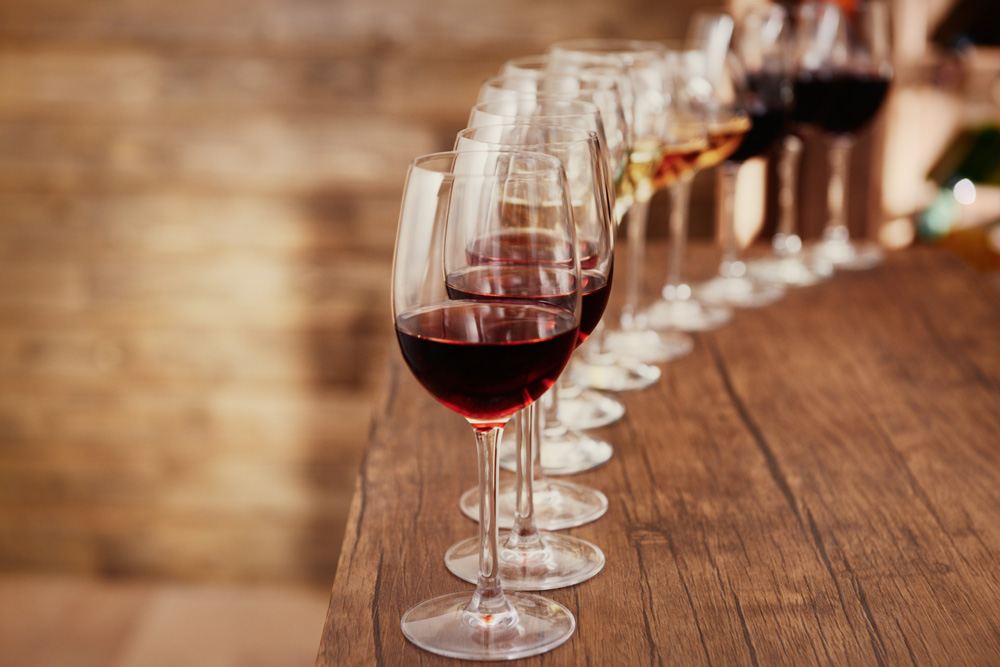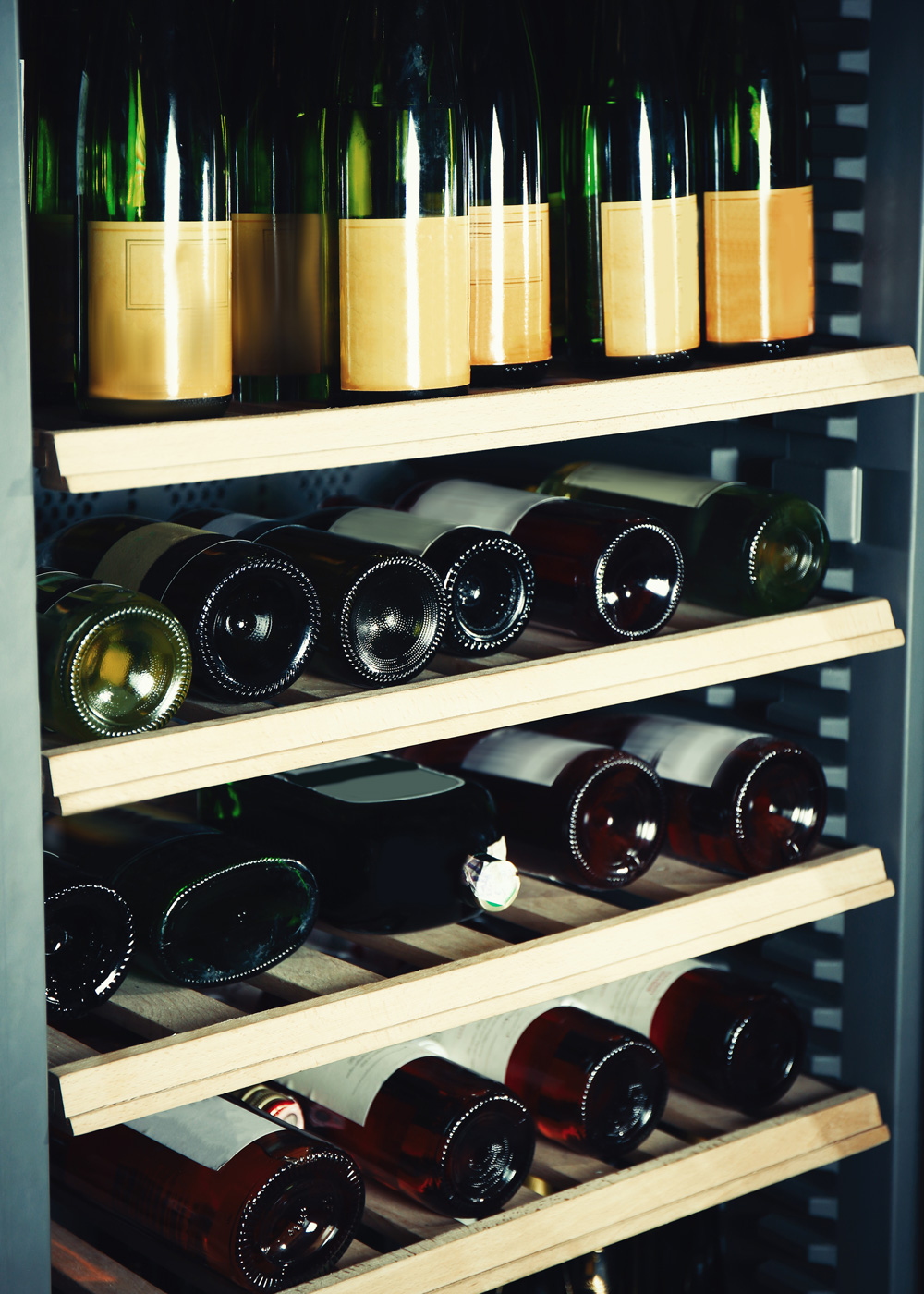Whether you have a state-of-the-art cellar or a modest temperature-controlled refrigerator, collecting bottles can be one of the most satisfying parts of wine culture. Building and maintaining a well-rounded collection of wines will help to ensure that you always have the right bottle on hand for any occasion. Here are twelve essential wines to get you started:
Red Bordeaux
The polished red wines of Bordeaux are a staple of any collection, great or small. Those from the Left Bank are based on the Cabernet Sauvignon grape, known for firm tannins which act as a preservative and complement foods with fat, such as steak. Wines from the Right Bank, on the other hand, are based on the Merlot grape, which imparts them with a rich, velvety texture. Best of all, you don’t necessarily have to hunt for the classified growths in order to drink great Bordeaux, since outstanding vintages often generate high quality wines at all levels of price.
Napa Valley Cabernet Sauvignon
Wines made from Cabernet Sauvignon are what established Napa Valley as a serious contender among world regions. These wines tend to favor power and ripe fruit flavors over the subtle earthy and elegant style of Bordeaux, yet still possess the structure for long-term aging. No collection is complete without at least one fine example of Napa Cab.
Barolo/Barbaresco
Located in Italy’s Piedmont region, and produced exclusively from the Nebbiolo grape, the wines of Barolo and Barbaresco are a reliable and age-worthy addition to any cache of bottles. Over time, their tannins will soften, and mature notes of tobacco, leather, tar, and truffles will become more evident. Hang onto them to find out why they’re considered the King and Queen of Italian wines.

Brunello di Montalcino
Sangiovese is the most noble of all grapes from the Italian region of Tuscany, and the wines of Brunello di Montalcino are its leading expression. Brunello offers intense aromas and flavors of red cherry, leather, dried herbs, and spice. These wines are full-bodied yet graceful, making them a terrific option to pair with richer dishes – especially those incorporating tender meat and mushrooms. The very best versions will handsomely reward after cellaring.
Red Burgundy
France’s Burgundy region serves as the reference point for wines made from the Pinot Noir grape. These lighter red wines can display an unparalleled degree of finesse, making them an extremely flexible choice to match with food. With time in the glass, they can deliver a sublime bouquet of red berry fruits, roses, savoriness, and minerality. Premier Cru and especially Grand Cru wines continue to remain among the most coveted in the world.
White Burgundy
Produced from the Chardonnay grape, Burgundy’s white wines come in two main styles: clean and crisp, or round and creamy. The Premier and Grand Crus are usually made in the latter style and have the best potential for aging. Cooler areas tend to produce wines with notes of green and citrus fruits, while those from warmer places may offer stone and tropical fruit flavors. Deciding whether or not to age Chardonnay in oak barrels will determine the style of the finished wine.
Champagne
Be sure to keep a bottle of Champagne around for special celebrations. These toasty sparkling wines are one of life’s greatest indulgences. They’re also delicious with a variety of foods – from fried chicken to lobster. After you pop the cork, try some bubbly out of a Burgundy-shaped glass to fully experience the spectrum of its nuanced aromas and flavors.

Rioja
Commonly based on the Tempranillo grape, the red wines of Spain’s Rioja region are among the foremost values of the Old World. Gran Reserva Rioja wines see the most aging in barrel and bottle, followed by Reserva, and then Crianza. You can taste the oak influence in these wines through hints of vanilla, smoke, and exotic spices. The finest Rioja can develop in the bottle over many years.
Châteauneuf-du-Pape
As the premier wine of France’s southern Rhône region, Châteauneuf-du-Pape has become highly fashionable in recent years. Although these red blends can be made from more than a dozen different grapes, the black Grenache variety is dominant. Most Châteauneuf tends to be savory, peppery, and earthy in character, while the scent of Herbes de Provence may also be present. Many of these powerful reds can be enjoyed with minimal bottle aging.
Australian Shiraz
Known in France as Syrah, the Shiraz grape has found success in Australia, particularly in regions to the south such as Barossa Valley and McLaren Vale. These potent red wines are typically expressive of ripe dark berries, black pepper, and smoked meat or leather. Try a classic pairing, like Shiraz and rack of lamb.

Sancerre/Pouilly-Fumé
The French appellations of Sancerre and Pouilly-Fumé are considered by many to be the home of the world’s finest Sauvignon Blanc. The white wines produced in them are usually clean, bright, and mineral-driven, making for a refreshing aperitif and are also delicious as a companion to salads, goat cheese, and seafood. With a few exceptions, these wines are best consumed very young, which allows flavors of soft tree and citrus fruits to shine.
Sauternes
If you’re in the mood for a sweet white wine, Sauternes is just the ticket. Produced in Bordeaux primarily from Semillon and Sauvignon grapes that develop botrytis, or “noble rot,” Sauternes finds a balance between rich sweetness and lively acidity. These wines have excellent aging potential, too, and can complement sweet and spicy dishes, desserts, and blue cheeses.



